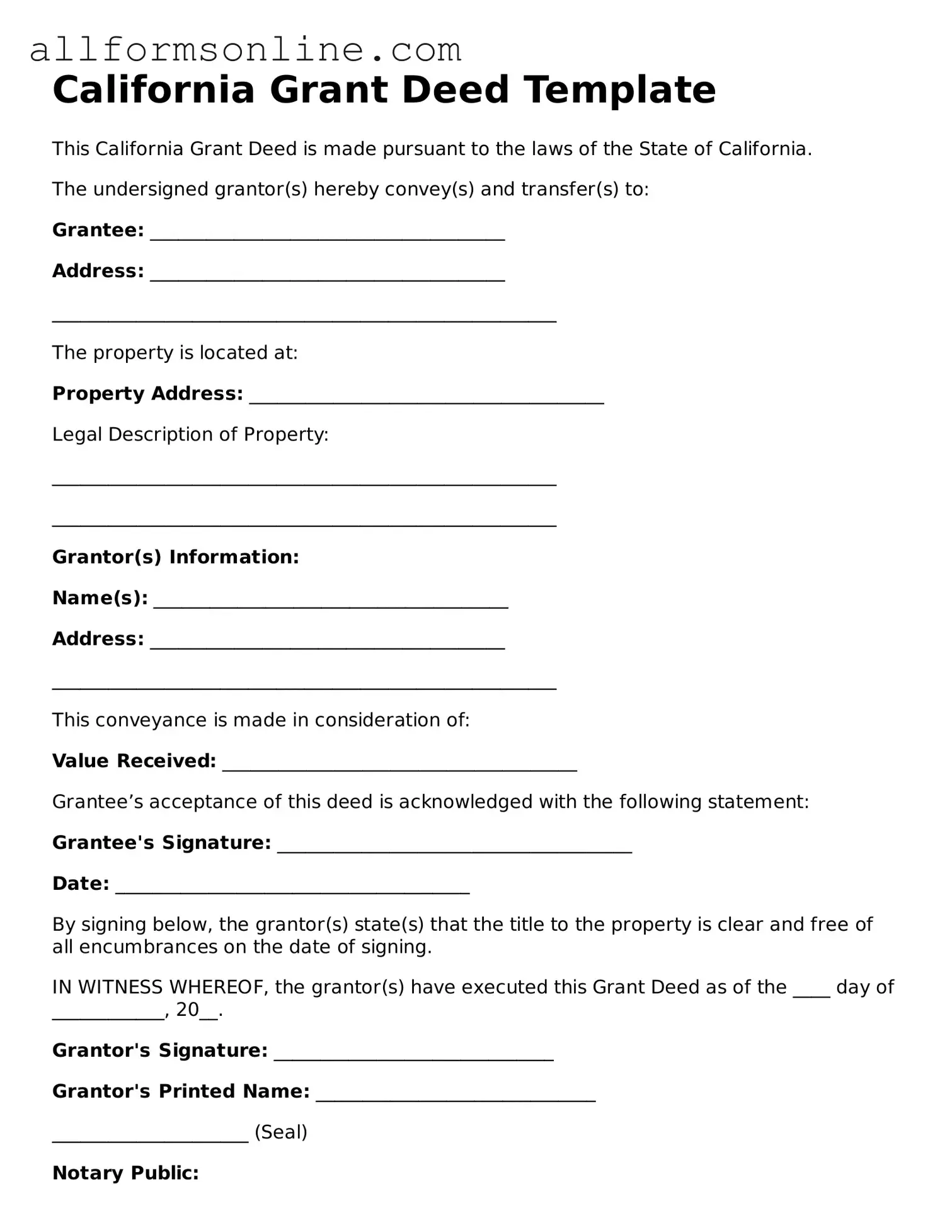What is a California Deed form?
A California Deed form is a legal document used to transfer ownership of real property in the state of California. It serves as proof of the transfer and outlines the details of the transaction, including the parties involved, the property description, and any conditions of the transfer.
What types of Deeds are available in California?
California recognizes several types of Deeds, including Grant Deeds, Quitclaim Deeds, and Warranty Deeds. Each type serves a different purpose. A Grant Deed provides some assurances about the property, while a Quitclaim Deed transfers whatever interest the grantor has without any guarantees. A Warranty Deed offers the highest level of protection for the grantee.
How do I fill out a California Deed form?
To fill out a California Deed form, you must include the names of the grantor and grantee, a legal description of the property, and any relevant details about the transaction. Ensure that the form is signed by the grantor and notarized. Accuracy is crucial; errors can complicate the transfer process.
Do I need a lawyer to prepare a California Deed?
While it is not legally required to have a lawyer prepare a California Deed, it is highly recommended. A legal professional can ensure that the document complies with state laws and that all necessary information is included. This can help avoid potential disputes in the future.
Where do I file a California Deed?
A California Deed must be filed with the county recorder’s office where the property is located. This filing makes the transfer public record. Check with your local county recorder for specific filing requirements and fees.
Is there a fee to file a California Deed?
Yes, there is typically a fee associated with filing a California Deed. Fees vary by county, so it’s important to check with the local recorder’s office for the exact amount. Be prepared to pay this fee at the time of filing.
What happens after I file the California Deed?
Once you file the California Deed, the county recorder will process the document and officially record the transfer of ownership. You will receive a copy of the recorded Deed for your records. This serves as legal proof of ownership.
Can I revoke a California Deed after it is filed?
Revoking a California Deed can be complicated. Generally, once a Deed is filed and recorded, it cannot be unilaterally revoked. If you wish to reverse the transfer, you may need to execute a new Deed or seek legal advice to understand your options.
